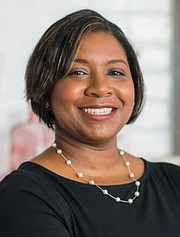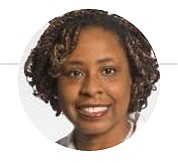Patients and doctors alike adapt during a year of COVID-19
Ronald E. Carrington | 4/22/2021, 6 p.m.
During the height of the coronavirus pandemic, everyday activities people often took for granted — hugs, seeing friends at birthday parties, dinners out and midday coffee runs with colleagues — were no longer considered safe and harmless.
Life as we knew it was fundamentally altered. Isolation has affected many people’s personal outlook and emotional and mental stability, according to the experts.
It’s important to recognize the various stages of emotions that have hit people during the past year living under COVID-19, said Dr. Rashida Gray, a board certified psychiatrist in the Richmond area whose practice specialty includes anxiety, depression and medication management.
“People’s emotional reactions, emotional responses and stress points have evolved over the course of the past year,” she said.
“Initially, my patients were scared. However, they were excited about time and life slowing down” during the lockdown, when many jobs, schools and businesses were shut down.
“Patients questioned what they could do with that extra time and the value of that time.”
During the latter half of the year, Dr. Gray was seeing a lot of loneliness among her patients.
“This is especially true for people living alone, people who are single or older who can’t readily connect with others either electronically or not being able to go outside,” Dr. Gray noted. “Loneliness has worn people down quite a bit a lot.”
Dr. Gray also noted grief as another huge psychological issue people are dealing with, particularly as COVID-19 has claimed the lives of more than 10,600 people in Virginia alone and resulted in more than 567,000 deaths across the nation.
In addition to these personal and universal losses, people have lost jobs, can’t participate in family milestones or go to their favorite restaurants or participate in activities that were part of normal life, all of which have an impact.
In contrast, Dr. Gray noted, most people can see some good coming out of the past year.
“Some people see something good about this time period,” Dr. Gray said, adding that she has seen a reduction of fear in some patients as vaccinations have been stepped up.
Like people, Dr. Gray and other medical professionals have adjusted their practices during the past year because of COVID-19. Dr. Gray, a solo practitioner, has gone from in-person visits with patients to tele-psychiatry appointments only that are conducted using a HIPAA-compliant video platform to protect a patient’s privacy.
Dr. Paula Young, a pediatrician in Richmond, sees patients with the Bon Secours Care-A-Van, a mobile free clinic that serves low-income patients and people who are uninsured or underinsured. A major portion of their patients come from Latino communities in Richmond, Petersburg and some surrounding counties.
According to the University of Virginia medical school graduate, the coronavirus has caused stress in every kind of way for physicians in general. In many cases, patient appointments have moved from face-to-face to virtual, which is very different, she said.
From the beginning of the pandemic, doctors have been concerned about everything they touch, she continued. Physicians have been mindful of using their stethoscopes on patients or touching items in their office. Even if a pen has been used by someone else, doctors may hesitate to touch it because of the potential of transmitting the virus, she said.
However, within her team, Dr. Young said, “during this past year we have been very supportive of every person’s professional and personal needs. My colleagues are more understanding of me using more virtual appointments and tools,” said Dr. Young, who noted she has an underlying condition that may make her more susceptible to COVID-19.
Her patient care appointments are done virtually by phone and/or an interactive Zoom platform, often using a virtual stethoscope. She can perform heart and lung examinations via Blue Tooth live stream in real time when a patient goes to the clinic and has assistance from the medical staff.
“That reduces my stress as our team is there for each other in every way possible,” Dr. Young said.
Her long-standing question for her pediatric team is simple: Are we stressing or are we just aware?
“Our job is to help our patients,” she said. “However, now during COVID, we extend that to our colleagues. We are more in tune with each other, although there is social distancing going on. Modern communication, using technology platforms and the phone, has improved during the course of the last year.”
Dr. Young said patients are asking more questions about the federal Centers for Disease Control and Prevention COVID-19 guidelines and how and where they can get vaccinated.
“Patients also want to know, after getting the first shot, when can they get the second shot. Can they get it a week late? Will they be immune after the second shot?” Dr. Young said.
She views that interest in the vaccine as a great benefit coming out of the last 12 months.
Dr. Young said families also are seeking school physicals, traditional vaccines and health maintenance care for preventable diseases as in-person learning ramps up and schools begin to reopen.
Both Dr. Young and Dr. Gray said they have learned a lot during the pandemic.
“We can continue to use that knowledge, skills and applications to deliver even better health care moving forward, as we have shown that we can adapt and focus on the things that are most important,” Dr. Young said.
“We have shown ourselves to be innovative, ensuring our patients get the quality standard of care they deserve.”









